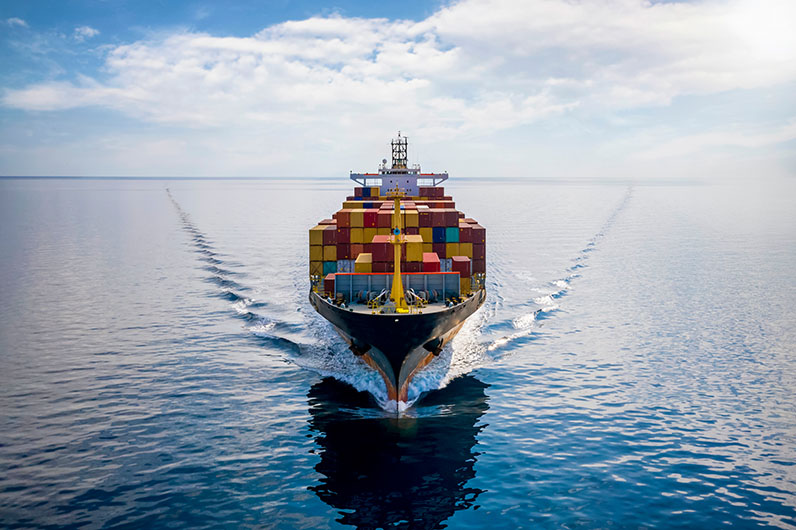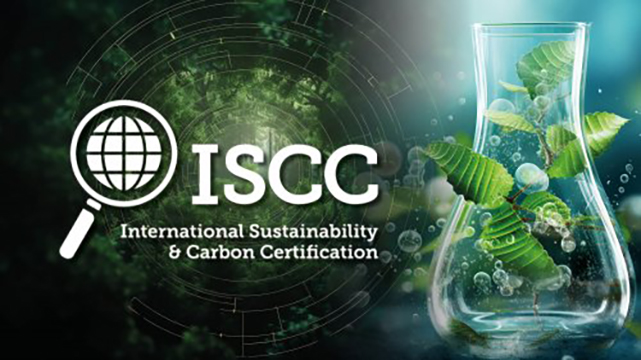More news
- Focus on industrial: Powering the energy industry during extreme heat
- Focus on powder coatings: The coatings industry’s transition to PFAS/PTFE-free solut...
- “We see sustainability as a purpose, as a reason for doing business” – P...
- Focus on industrial: High-performance coating protects tanks at biopolymer production plan...
- Focus on powder coatings: Novel high-speed crosslinking technology

In recent years, regulations pertaining to Per- and Polyfluoroalkyl Substances (PFAS) have garnered heightened attention due to escalating concerns about their adverse environmental and health effects. IGL Coatings has focused its efforts in marine coatings on navigating a new eco-innovation for a PFAS-free journey
The prolonged persistence of PFAS in the environment, coupled with potential health risks, has prompted global authorities to enact and reinforce regulations geared towards monitoring, restricting and minimising the use of these substances.
In March 2023, The European Chemicals Agency (ECHA) published a draft proposal for the restriction of PFAS. Upon finalisation, the restriction will be enforced under the Registration, Evaluation, Authorization, and Restriction of Chemicals (REACH) regulation as early as 2027.
Understanding PFAS
PFAS, or Per- and Polyfluoroalkyl Substances, represent a group of synthetic chemicals extensively employed in various industrial and consumer products since the 1940s. Recognised for their remarkable water, grease and oil repellent properties, PFAS finds utility in applications like waterproofing, stain resistance and non-stick coatings.
A notable concern lies in the persistent nature of PFAS, often referred to as “forever chemicals,” due to their slow breakdown attributed to a robust carbon-fluorine bond.
Scientific findings underscore potential health risks associated with PFAS exposure, creating the need for proper management and disposal of PFAS-containing products, which is imperative to mitigating environmental release and safeguard human health.
PFAS and hydrophobicity
Hydrophobic coatings, essential for easy cleaning, often rely on fluoropolymers or fluoro-modified surface additives. The surface energy of these coatings correlates with hydrophobicity, influencing surface wettability.
IGL Coatings, aligning with a growing emphasis on sustainability, has embraced silicone-based resin technology adopted in its Marine Solutions products. Unlike fluoropolymers, these silicone-based coatings exhibit hydrophobic and stain repellent properties and a better safety profile.

Caption: Routine surface energy measurements via goniometer are done in IGL Coating’s laboratory
Commitment to sustainability
With a growing emphasis on sustainability, IGL Coatings actively enhances its processes and facilities to minimise environmental impacts. This commitment to eco-innovation is reflected in the development of its Marine Solutions products, which are not only REACH-compliant but also free from fluoropolymers.
Instead of fluoropolymers, IGL Coatings adopts silicone-based resin technology to imbue its Marine Solutions Series coatings with hydrophobic and stain-repellent properties.
Marine by IGL Coatings is a premium ceramic coating formulated for maritime vessels. In its first marine series, IGL introduced specific products that eased the maintenance and cleaning processes of the marine aftermarket. From marine grade hard water mark removers, mould and mildew cleaners, to intense all-purpose solutions, the products promise greener solutions for the industry.
READ MORE:
The adoption of greener alternatives
Silicone resin-based coatings typically exhibit a surface energy of approximately 20 mN/m, only slightly higher than PFAS, such as Teflon, which has a surface energy of 19 mN/m.
Silicone-based resins, better known in the detailing industry as ceramic coatings, are formed by branched oligo-siloxanes. They can be formulated to be an ambient temperature moisture curing system, forming siloxane linkages.
With a creative selection of the precursors and through the use of additives, the resin properties can be modified and optimised. A simplified diagram of the coating formation process is illustrated below.

Caption: Silicone coating formation
Due to the low surface energy properties of the coated surface, most contaminants and dirt are unable to adhere strongly to the coated surface.
This behaviour allows for the easy removal of the contaminants. Silicone resins are also well-known for their chemical inertness and excellent thermal and UV resistance. When fully cured, the high degree of crosslinking density contributes to its chemical resistance, enabling it to withstand strong acids, caustics and solvents like petrol and diesel.
Material selection plays a central role in IGL Coating’s drive for sustainability. Lifecycle analysis and hazard identification are done at an early stage in the product development process, favouring bio-based or sustainably sourced materials and actively avoiding heavy metals, persistent organic pollutants, aromatic solvents and raw materials that compete with food sources.

Ensuring greater responsibility on each product produced, IGL Coatings continues its pursuit for new innovative raw materials, processes and technological breakthroughs that can further reduce their carbon footprint and environmental impact. The company has focused on a 30% reduction in emissions from international shipments through proactive carbon offsetting and initiatives to efficiently reduce water consumption by an impressive 163 million litres.
IGL’s sustainability drive has also spurred economic growth by creating opportunities for more than 5,000 micro- and small-sized entrepreneurs, all while keeping their cleaning products formulated with 100% biodegradability and maintaining a 99% recyclable packaging rate.
CEO of IGL Coatings, Keong Chun Chieh noted that inspiration for the new Marine Products to be lauched in 2024 stems from nature itself: “The team actively finds new ways to emulate and replicate the beneficial natural responses observed in plants or animals for enhancing our coating applications and solutions. Our aim is to reduce overall environmental impact, betterment of communities and resource conversation.”







